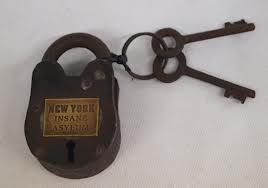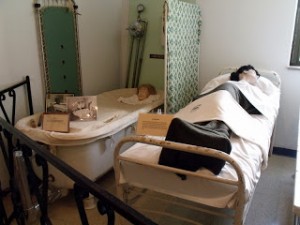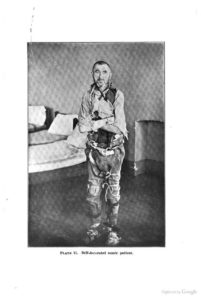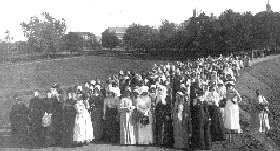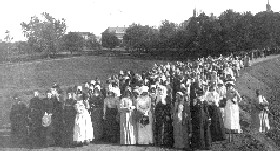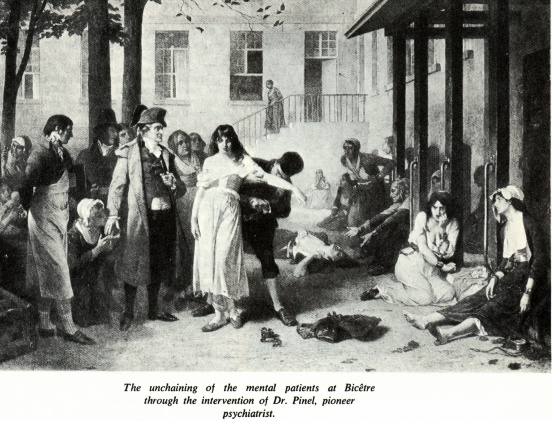From accounts by former patients, it seems probable that many cases of cruelty and abuse were deliberate. Attendants were often uneducated, uncaring, or of a type who found it impossible to get a job anywhere but in an asylum. Those who enjoyed dominating weak or helpless patients often had little oversight to prevent their doing what they liked; patients reported beatings and punishments which were clearly typical and sustained rather than lapses in judgment or reactions during a crisis. However, attendants often used restraints and other methods of control because they were convenient. Attendants in a short-staffed ward might reasonably believe that it was better to restrain a violent patient or lock him up, rather than let him hurt himself or other patients. Attendants might force feed a patient that they feared would starve because she wouldn’t eat of her own accord. Many attendants undoubtedly did these kinds of things with a perfectly clear conscience.
At the Canton Asylum for Insane Indians, both types of abuse occurred. A few patients complained of witnessing cruel teasing that would make the targets upset, or of seeing patients treated with unnecessary force or bullied. Attendants more frequently treated their patients badly out of convenience. The asylum was usually short of attendants, particularly under Dr. Harry Hummer. One attendant might have to take care of an entire ward, or at night, an entire building. It was vastly easier to lock patients in their rooms or put them in a restraint, than forgo a meal or get behind on chores for which they would be disciplined if they didn’t complete. Though restraints were supposed to be used only with the permission of the superintendent, the restraints at Canton Asylum were kept in the financial clerk’s office and given out to any attendant who asked for one.
______________________________________________________________________________________
